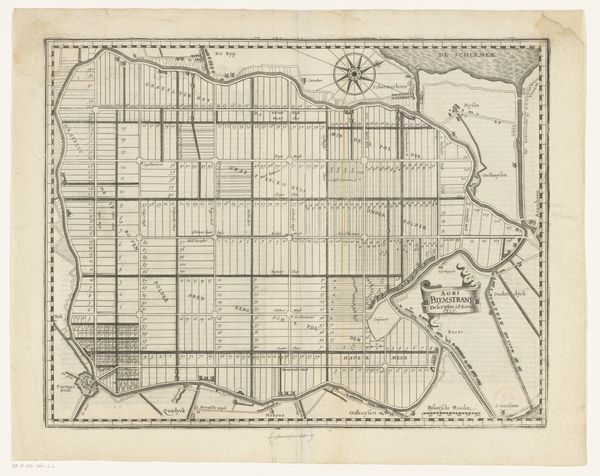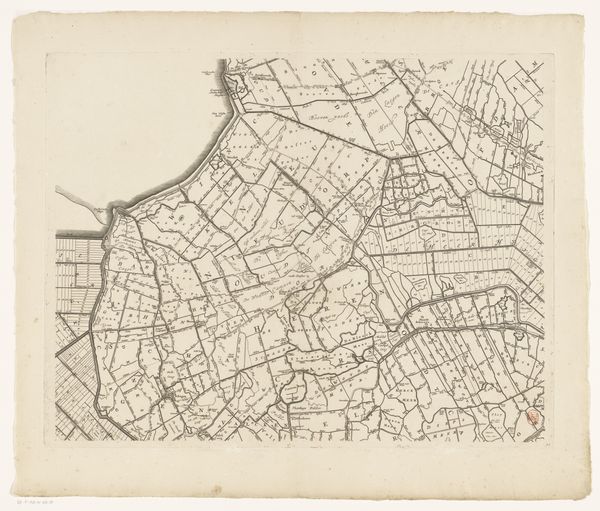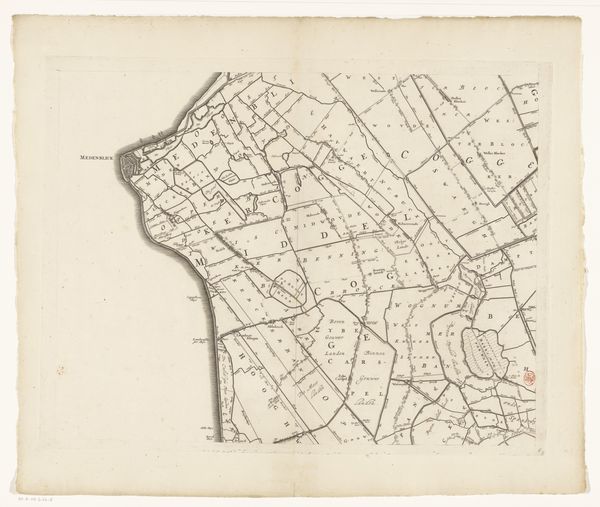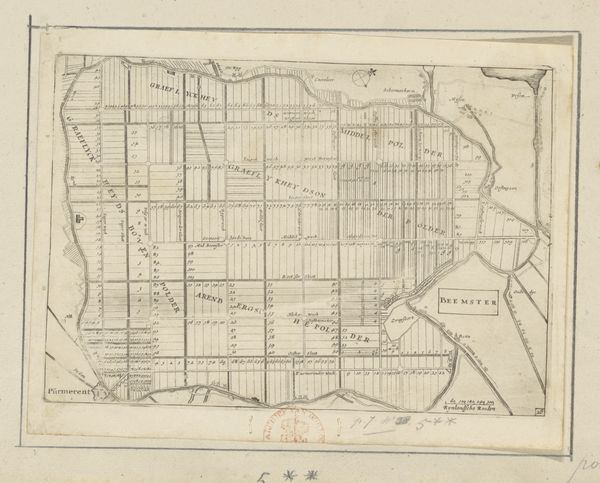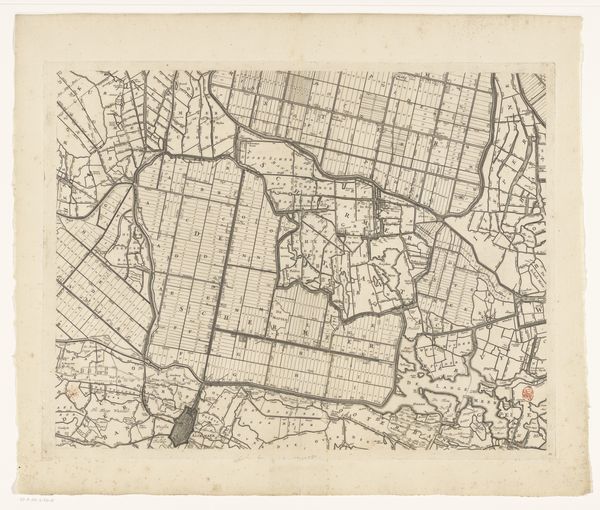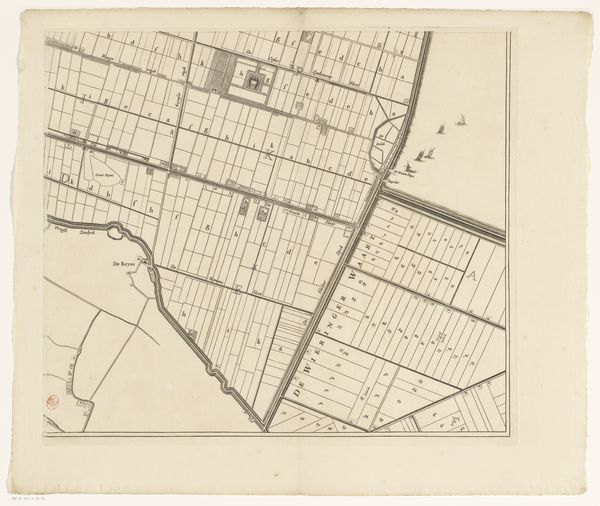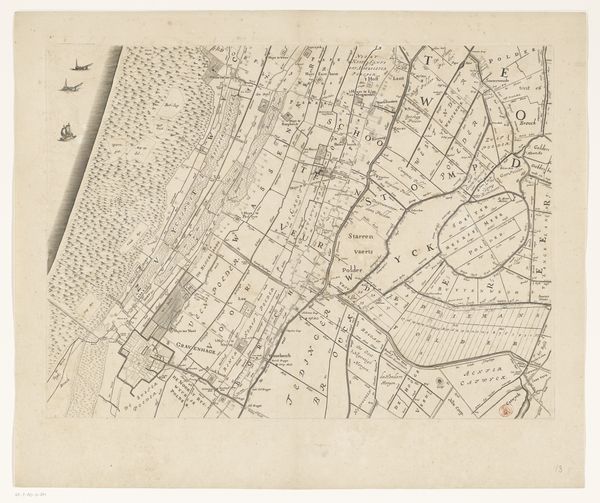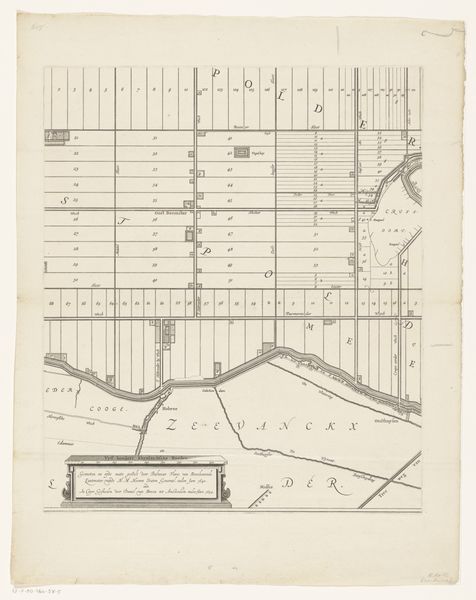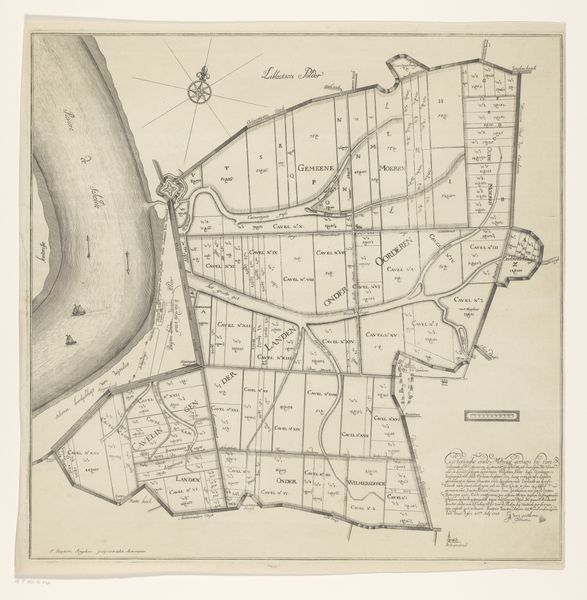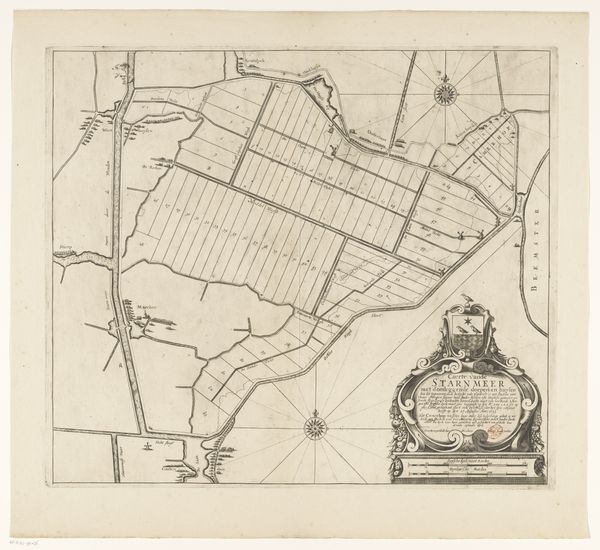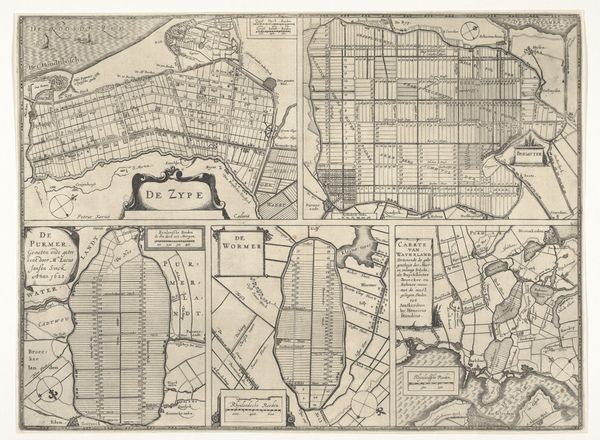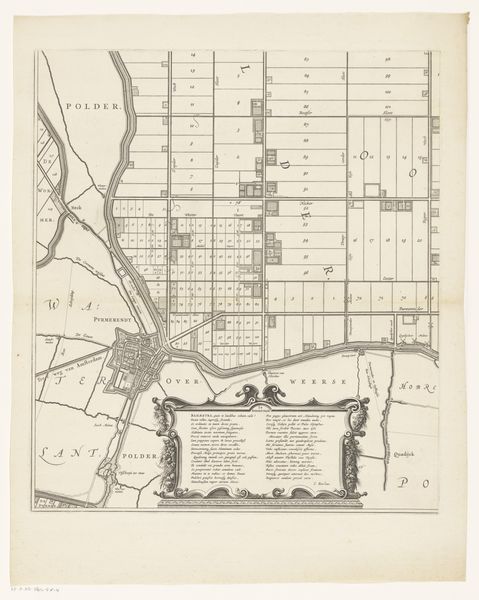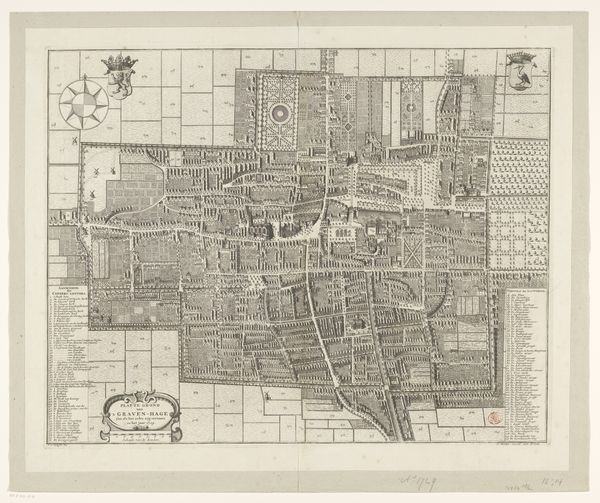
graphic-art, print, etching
#
graphic-art
#
medieval
# print
#
etching
#
landscape
#
etching
Dimensions: height 437 mm, width 579 mm
Copyright: Rijks Museum: Open Domain
Curator: "Kaart van de Beemster," created in 1658 by Daniël van Breen, offers us a bird's eye view of the Beemster region rendered through graphic art using etching. Editor: The first thing that strikes me is how ordered it is, almost regimented. That grid of lines really dominates the composition, with those little blocks within feeling oddly sterile. Curator: Exactly, and this sterilization speaks to a specific moment in Dutch history. The Beemster was one of the first polders reclaimed from the sea, starting in 1607. This map, made roughly fifty years later, represents not just geography, but a major shift in the Dutch relationship with the environment, asserting control and transforming wetlands into productive land. This ambition also mirrors the rising economic and political power of the Dutch Republic. Editor: From a materialist perspective, the act of reclamation itself, draining the land and imposing this geometry, involves tremendous labor. Etching itself, the meticulous work of cutting those precise lines into a metal plate, echoes the labor imposed on the land. Curator: That’s a powerful connection. Also, the imposition of the grid becomes a metaphor for social structures too, suggesting the imposition of property ownership and the organization of society. Who was granted this land and who toiled upon it? Editor: And considering that many Dutch artists were using new techniques to grind and mix colors to produce increasingly lifelike paintings in this period, this is about imposing control versus trying to record a "naturalistic" appearance, or at least not giving the appearance of perfect exactitude. Curator: Absolutely. Furthermore, understanding this map also requires we see the hidden labor and resources consumed by creating such a large project. What was gained and what was lost? It embodies the aspirations and contradictions of that period. Editor: For me, knowing how reliant so much 17th century artistic development depended on enslaved people's labor, this image feels like part of an exploitative world-system. Curator: Understanding the intersections of race, class, and power helps to unpack these intricate colonial narratives that this object might suggest. Thank you for your input! Editor: My pleasure. Reflecting on the art helps one focus on all the labor involved that an artist would be only superficially conscious of when creating.
Comments
No comments
Be the first to comment and join the conversation on the ultimate creative platform.
